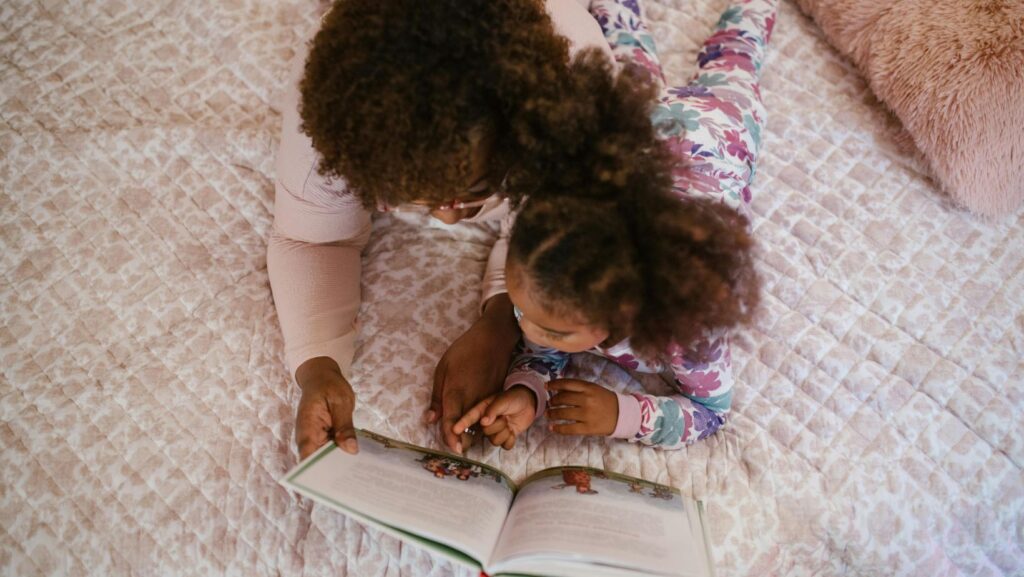Routines give kids a roadmap for their day, creating patterns they can rely on. When life feels predictable, children feel safer. It’s emotional as much as chemical.
If you’re wondering how this all works, hold tight as we talk over routines across ages with practical examples for mornings, meals, bedtime, and more.
What Counts as a Routine?
A routine is any set of repeated actions with consistent timing or structure. It doesn’t have to be rigid, but it should provide clear expectations. Brushing teeth before bed, setting the table for meals, or singing the same lullaby nightly all qualify.
Routines don’t need bells and whistles. Even simple patterns, like saying goodbye at daycare with a hug, offer kids grounding moments in their day. These repetitive cues tell their brains what comes next.
It’s like teaching a rhythm; children internalize the beat over time, helping them feel secure and prepared as they navigate their world each day.
Why Predictability Lowers Stress in Kids
Predictable routines reduce cortisol, the stress hormone. When children know what to expect, their brains feel less need to stay on high alert. It’s especially useful for neurodivergent youngsters, studies show.
Routines also reinforce emotional safety. Kids trust caregivers more when daily rhythms align with consistent patterns. This stability strengthens emotional regulation.
Even during transitions, like moving or starting school, a predictable schedule provides grounding moments amid chaos. Over time, these steady practices help kids face challenges confidently because they’ve learned how stability feels and rely on it as an anchor for navigating change effectively.
How Cues Shape Executive Function and Behavior
Cues act like signposts, guiding kids through daily routines. They help develop executive function by teaching planning, focus, and self-control. A bedtime cue, like dimming lights, signals it’s time to wind down.
These small triggers build connections in the brain between action and response. Over time, this strengthens habits that promote independence. For example, hearing a timer reminds them to wrap up playtime without external prompting.
Cues also encourage cooperative behavior. When kids know what follows each step, like brushing teeth after putting on pajamas, they resist less because predictability minimizes uncertainty. It’s structure that fosters trust and smoother transitions naturally over time.
Building Language Skills Through Rituals and Stories
Storytime is more than a bedtime routine; it’s a language-building ritual. Listening to familiar stories helps kids connect words with meaning, expand vocabulary, and strengthen comprehension. Repetition is key, as hearing the same tale multiple times builds confidence in recognizing patterns.

Personalized narratives take engagement further. A story where your child becomes the hero deepens their emotional connection while reinforcing literacy skills. This is easier to create than ever, thanks to modern tech, and you’ll find more information here on how easy it is to order custom books that feature your little one in a starring role.
This shared time also nurtures social bonds. Discussing characters’ emotions or choices enhances empathy and understanding while modeling communication skills they’ll carry forward into life outside the storybook pages. Simple moments like these have a lasting impact on both brain growth and personal connection over time.
Age-Specific Routines: What Works When?
Routines evolve as kids grow. Babies thrive on simple sequences like feeding, diaper changes, and naps at consistent intervals. Toddlers benefit from visual schedules or songs signaling activities, making transitions smoother.
Preschoolers engage with routines involving choice, like picking their outfit before bedtime, to build independence. For school-age kids, clear after-school steps for homework and play balance structure with flexibility.
Teenagers still need routines, but in ways that respect autonomy. A family dinner or weekly check-in provides connection without rigidity.
Each stage requires adjustments to fit developmental needs while maintaining the underlying predictability that supports emotional regulation and a sense of control.
Practical Tips for Parents to Reinforce Healthy Habits
Begin with just one or two routines, such as morning prep or bedtime rituals. Consistency matters more than perfection. Stick to predictable steps so kids know what comes next. This is all part of appreciating that parental support is the foundation of good mental health in children.
Visual aids, like charts or timers, help younger children stay on track, while older kids benefit from shared planning discussions.
Make transitions smoother by using verbal cues, songs, or even playful countdowns. This turns stressful moments into opportunities for cooperation.
Celebrate progress along the way. Positive reinforcement encourages routines to stick without power struggles. By keeping habits enjoyable and straightforward, parents can foster a sense of accomplishment that motivates long-term commitment naturally over time.
Final Thoughts
Routines shape children’s brains and behavior by providing stability, lowering stress, and nurturing key skills like language and self-regulation. They’re the building blocks of a secure, predictable world kids rely on.
By starting small with consistent habits tailored to your child’s age, you create rhythms that promote growth and connection every day.

